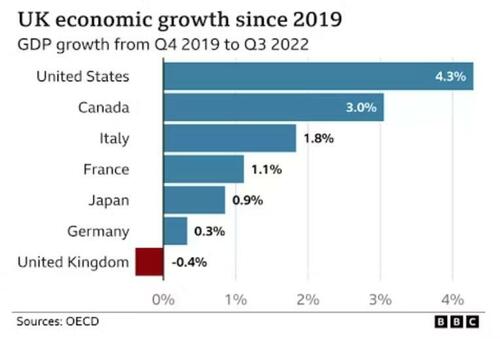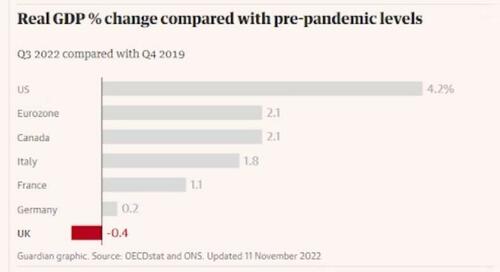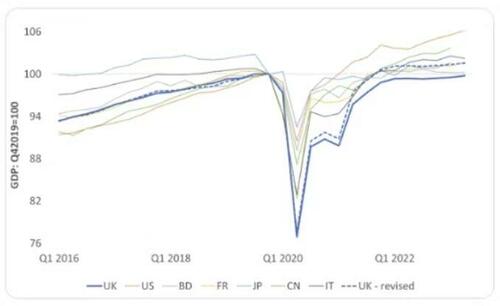British Court Rules That Competent & Conscious Patient Can Be Denied Life-Sustaining Treatment Against Her Will
In my torts class, I often compare the different approaches and doctrines in the United States and the United Kingdom.
One of the most pronounced is the position and authority of physicians on issues like consent and malpractice. This week produced a particularly striking example.
British doctors are seeking to take a 19-year-old critically ill female patient off the intensive care despite her objections and those of her parents.
Unlike most such cases, the woman known only as “ST” is conscious and communicative.
Yet, the doctors argue that she is not being realistic about her chances of survival from a rare disorder.
Now a British court has agreed and ordered that she can be placed on end-of-life care against her will.
ST is suffering from a rare genetic mitochondrial disease that is progressively degenerative. The case has similarities to that of Charlie Gard, an infant who was removed from life support at the insistence of doctors despite objections from the parents. The Gard family was seeking to take Charlie to the United States for experimental treatment.
ST has been in the ICU for the past year, requiring a ventilator and a feeding tube. She also requires regular dialysis due to chronic kidney damage from her disease.
She wants to be allowed to travel to Canada for an experimental treatment but the doctors oppose the plan and say that she is not accepting the realities of her terminal illness.
They say that she is “actively dying” without any hope of resuming life outside of intensive care.
Her deeply religious family have spent their entire life savings on her care and has complained that a “transparency order” requested by the hospital barred their ability to give details on the case to help raise public funds.
What is so remarkable about this case is that it is not an infant or a comatose patient.
The court found that ST “is able to communicate reasonably well with her doctors with assistance from her mother and, on occasion, speech therapists.”
Moreover, two psychiatrists testified that she is mentally competent to make decisions about her own care.
Despite all the difficulties which currently confront her, ST is able to communicate reasonably well with her doctors with assistance from her mother and, on occasion, speech therapists. Over the course of the last week she has engaged in two separate capacity assessments. I heard evidence from two consultant psychiatrists whose conclusions in relation to her capacity in both domains are set out in full written reports. . . .
She has been described by those who know and love her as “a fighter”. That is how she sees herself. At the heart of the issues in this case is what ST and her family perceive to be a ray of hope in the form of an experimental nucleoside treatment outside the United Kingdom which might offer her hope of an improved quality of life, albeit a life which is likely to end prematurely in terms of a normal life expectancy. She has told her doctors that she wants to do everything she can to extend her life. She said to Dr C, one of the psychiatrists who visited her last week, “This is my wish. I want to die trying to live. We have to try everything”. [Court’s emphasis] Whilst she recognises that she may not benefit from further treatment, she is resistant to any attempt to move to a regime of palliative care because she wants to stay alive long enough to be able to travel to Canada or North America where there is at least the prospect that she may be accepted as part of a clinical trial. . . .
ST is well aware that she has been offered a very poor prognosis by her doctors. She acknowledges that they have told her that she will die but she does not believe them. She points to her recovery from previous life-threatening episodes whilst she has been a patient at the intensive care unit. She believes she has the resilience and the strength to stay alive for long enough to undergo treatment abroad and she wishes the court to acknowledge her right to make that decision for herself.
Nevertheless, the judge found that she is mentally incapable of making decisions for herself because “she does not believe the information she has been given by her doctors.”
The court appears to reject her ability to make this decision because she is making the wrong decision:
In my judgment . . . ST is unable to make a decision for herself in relation to her future medical treatment, including the proposed move to palliative care, because she does not believe the information she has been given by her doctors. Absent that belief, she cannot use or weigh that information as part of the process of making the decision. This is a very different position from the act of making an unwise, but otherwise capacitous, decision. An unwise decision involves the juxtaposition of both an objective overview of the wisdom of a decision to act one way or another and the subjective reasons informing that person’s decision to elect to take a particular course. However unwise, the decision must nevertheless involve that essential understanding of the information and the use, weighing and balancing of the information in order to reach a decision. In ST’s case, an essential element of the process of decision-making is missing because she is unable to use or weigh information which has been shown to be both reliable and true.
Accordingly, the court ruled that decisions about ST’s further care should be determined by the Court of Protection based on an assessment of her best interests. Her “best interest,” according to the doctors, is to die.
Thus, the courts have declared that ST cannot choose to continue life-extending treatment and can be forced into palliative care against her will.
The logic of the decision is chilling.
The court is told that ST has cognitive and communicative abilities to make such decisions. However, because the court disagrees with her desire to continue to fight to live, she is treated as effectively incompetent.
It seems like the judicial version of Henry Ford’s promise that customers could pick any color car so long as it is black.
Here is the opinion: In the Matter of ST
Tyler Durden
Mon, 09/04/2023 – 06:20
via ZeroHedge News https://ift.tt/vzaCtei Tyler Durden














